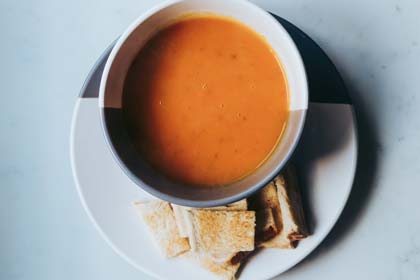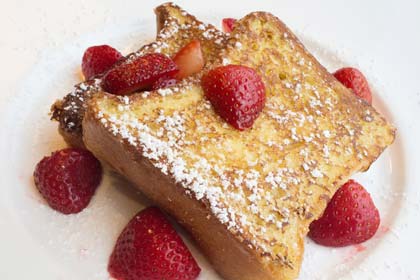
Bread Ingredient
Bread is a common ingredient in many recipes, but its health benefits and drawbacks can vary depending on the type of bread used.
Here’s an overview of the use of bread in recipes and the associated health pros and cons.
Bread as an Ingredient in Recipes
- Starch and Texture: Bread often acts as a source of starch and provides structure and texture in recipes. It can be used for binding meatballs, adding bulk to stuffings, or as a thickening agent in soups and sauces.
- Flavor and Moisture: Bread can contribute to the flavor and moisture of recipes. For example, in meatloaf, bread crumbs help retain moisture and create a tender texture.
Health Benefits of Bread
- Fiber and Nutrients: Whole-grain bread, when used in recipes, can provide dietary fiber and essential nutrients like B vitamins, iron, and magnesium. These nutrients support overall health.
- Satiety: The fiber content in whole-grain bread can promote a feeling of fullness, which may help control appetite and prevent overeating.
Cons of Bread
- Refined Grains: Many bread products, especially white bread, are made from refined grains, which lack the fiber and nutrients found in whole grains. Consuming refined grains in recipes can contribute to an overconsumption of empty calories.
- Gluten Sensitivity and Celiac Disease: Bread contains gluten, and for individuals with gluten sensitivity or celiac disease, its inclusion in recipes can lead to digestive discomfort and health issues. Gluten-free alternatives should be used in such cases.
- High Carbohydrate Content: Bread is a carbohydrate-rich food. While carbohydrates are an essential part of a balanced diet, using bread excessively in recipes can lead to high carb intake, potentially causing blood sugar spikes in those with diabetes or contributing to weight gain if not consumed in moderation.
- Added Sugar and Preservatives: Some commercial bread products contain added sugar, preservatives, and artificial ingredients. Using such bread in recipes can introduce these less healthy components to your dishes.
Tips for Using Bread in Recipes
- Choose Whole Grain Bread: Opt for whole-grain or whole-wheat bread instead of white bread to incorporate more fiber and nutrients into your recipes.
- Moderation: Use bread in recipes in moderation. Balance it with other healthy ingredients like vegetables, lean proteins, and whole foods.
- Limit Processed Bread: Whenever possible, choose minimally processed bread with simple ingredient lists, free from excessive additives and preservatives.
- Consider Gluten-Free Options: For those with gluten sensitivity or celiac disease, use gluten-free bread alternatives when needed.
- Experiment with Healthier Variations: Explore recipes that use bread alternatives, such as whole-grain crackers, pita, or wraps, to add variety to your dishes.
Incorporating Bread in Your Diet
Certainly, you can incorporate bread as an ingredient in various recipes tailored to specific diets. Here are some examples of how to use bread in recipes for different dietary preferences:
1. Gluten-Free Bread Crumbs (for Gluten-Free Diet):
- Use gluten-free bread to make homemade bread crumbs. Simply toast the gluten-free bread until it’s crispy, then blend it into crumbs. These can be used as a gluten-free coating for fried foods, as a topping for casseroles, or as a filler for meatballs and meatloaf.
2. Keto-Friendly Croutons (for a Keto Diet):
- To create keto-friendly croutons, use low-carb bread or cloud bread (made from eggs and cream cheese). Cut the bread into small cubes, season with keto-friendly herbs and spices, and then toast them in the oven until they’re crispy. These can be used as salad toppers or soup garnishes.
3. Vegan Bread Pudding (for a Vegan Diet):
- Make a vegan bread pudding using your favorite vegan bread, almond milk or coconut milk, sweeteners like maple syrup, and ingredients like raisins, cinnamon, and nutmeg. It’s a comforting dessert that doesn’t require dairy or eggs.
4. Paleo-Friendly Stuffing (for a Paleo Diet):
- To prepare a paleo-friendly stuffing, use almond flour or coconut flour-based paleo bread. Sautee vegetables like onions, celery, and herbs, then mix them with the paleo bread crumbs. Bake for a delicious stuffing option.
5. Low-Carb Bread Pizza (for a Low-Carb Diet):
- Use low-carb bread, such as cloud bread or almond flour-based bread, to make a low-carb pizza crust. Top it with your favorite low-carb toppings, including sugar-free tomato sauce, veggies, and cheese.
6. Whole Wheat French Toast (for a Balanced Diet):
- Make classic whole wheat French toast using whole wheat bread. Dip slices of whole wheat bread in a mixture of eggs, milk, and a touch of vanilla extract. Cook until golden brown for a balanced and delicious breakfast.
7. Vegan Bread and Nut Pate (for a Vegan Diet):
- Use vegan bread as a base for a nut pate. Combine nuts (such as almonds, walnuts, or cashews), garlic, herbs, and seasoning in a food processor. Spread the pate on slices of vegan bread for a flavorful appetizer or snack.
8. Low-FODMAP Bread Bruschetta (for a Low-FODMAP Diet):
- Select a low-FODMAP bread and prepare bruschetta with ingredients like tomatoes, basil, olive oil, and balsamic vinegar. This recipe is suitable for individuals following a low-FODMAP diet.
Bread can be a versatile ingredient in recipes, but its health benefits and drawbacks largely depend on the type of bread used and how it fits into your overall diet. Adapt these ideas to suit your specific diet and taste preferences while ensuring you use the appropriate bread variety for your needs.

